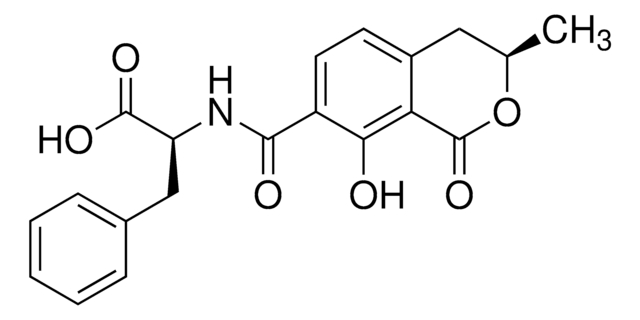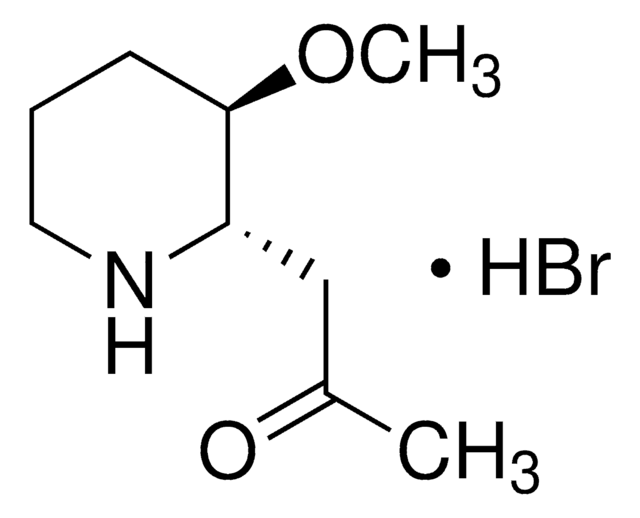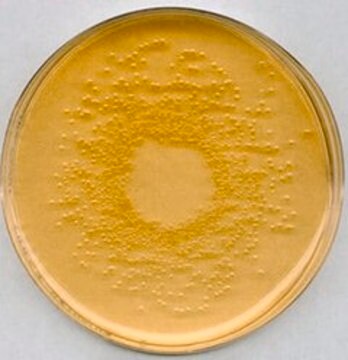MABS482
Anti-PL Scramblase 1 Antibody, clone 1A8
clone 1A8, from mouse
Synonyme(s) :
Phospholipid scramblase 1, PL Scramblase 1, Ca(2+)-dependent phospholipid scramblase 1, Erythrocyte phospholipid scramblase, MmTRA1b
About This Item
Produits recommandés
Source biologique
mouse
Niveau de qualité
Forme d'anticorps
purified antibody
Type de produit anticorps
primary antibodies
Clone
1A8, monoclonal
Espèces réactives
human, mouse
Technique(s)
immunohistochemistry: suitable
immunoprecipitation (IP): suitable
western blot: suitable
Isotype
IgG2bκ
Numéro d'accès NCBI
Numéro d'accès UniProt
Conditions d'expédition
wet ice
Modification post-traductionnelle de la cible
unmodified
Informations sur le gène
human ... PLSCR1(5359)
Description générale
Immunogène
Application
Signaling
Signaling Neuroscience
Immunohistochemistry Analysis: A 1:50 dilution from a representative lot detected PL Scramblase 1 in mouse colon tissue.
Western Blotting Analysis: A representative lot detected PL scramblase 1 in platelets and lung tissue from wild-type and PLSCR3-/-, but not PLSCR1-/-, mice, while little or no PL scramblase 1 was detected in adipocyte or muscle samples from wild-type or the knockout animals (Wiedmer, T., et al. (2004). Proc Natl Acad Sci USA. 101(36):13296-13301).
Western Blotting Analysis: A representative lot detected retroviral-mediated ectopic expression of murine PLSCR1 in SCF-ER-Hoxb8-immortalized myeloid progenitor cells from PLSCR1−/− mice (Chen, C.W., et al. (2011). J Leukoc Biol. 90(2):221-233).
Immunprecipitation Analysis: A representative lot immunoprecipitated PL scramblase 1 from murine bone marrow-derived mast cells (BMMCs) following IgE receptor activation. Tyrosine phosphorylation of PL scramblase 1 was then checked by Western blotting with clone 4G10 (Kassas, A., et al. (2014). PLoS One. 9(10):e109800).
Qualité
Western Blotting Analysis: 1.0 µg/mL of this antibody detected PL Scramblase 1 in 10 µg of HeLa cell lysate.
Description de la cible
Forme physique
Stockage et stabilité
Autres remarques
Clause de non-responsabilité
Vous ne trouvez pas le bon produit ?
Essayez notre Outil de sélection de produits.
Code de la classe de stockage
12 - Non Combustible Liquids
Classe de danger pour l'eau (WGK)
WGK 1
Point d'éclair (°F)
Not applicable
Point d'éclair (°C)
Not applicable
Certificats d'analyse (COA)
Recherchez un Certificats d'analyse (COA) en saisissant le numéro de lot du produit. Les numéros de lot figurent sur l'étiquette du produit après les mots "Lot" ou "Batch".
Déjà en possession de ce produit ?
Retrouvez la documentation relative aux produits que vous avez récemment achetés dans la Bibliothèque de documents.
Notre équipe de scientifiques dispose d'une expérience dans tous les secteurs de la recherche, notamment en sciences de la vie, science des matériaux, synthèse chimique, chromatographie, analyse et dans de nombreux autres domaines..
Contacter notre Service technique







